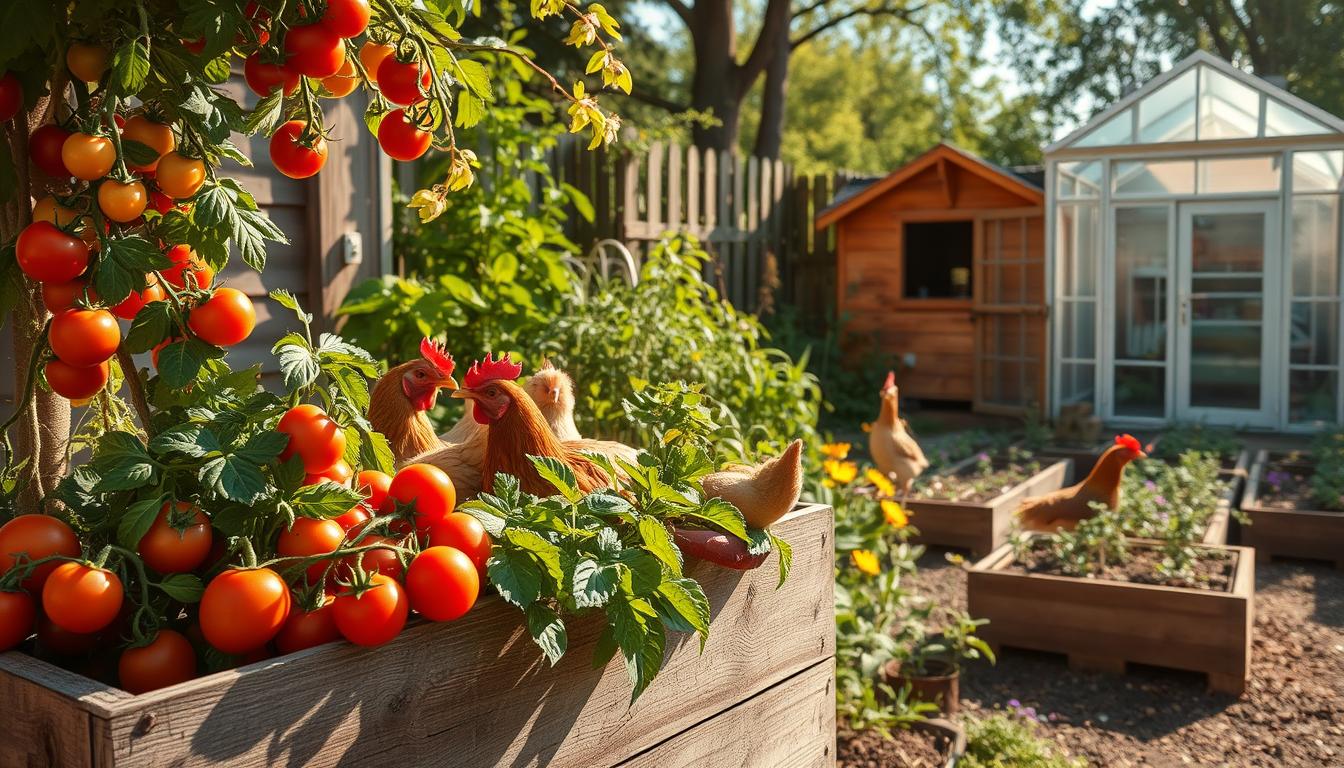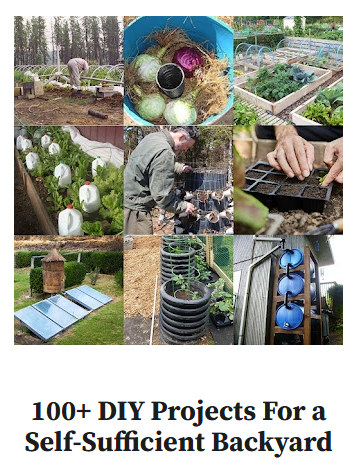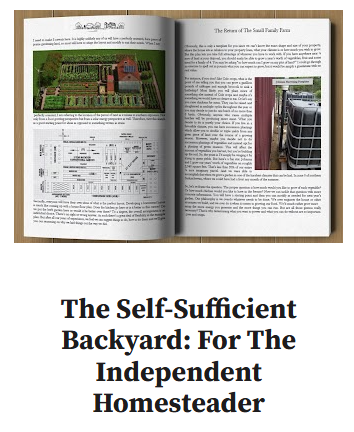Imagine cutting your grocery bills by up to $1,500 a year. You can turn your backyard into a productive space. Over 50% of people interested in sustainable living are doing just that.
Urban homesteading is more than a trend. It’s a way to gain financial freedom and grow your own food. About 57% of city folks want to grow their own food. This shows the growing interest in sustainable living.
Your backyard can be a food-producing haven, even if it’s small. Urban gardens can produce 100-300% more food than traditional farms. This means you can grow a lot of your family’s food right at home.
Key Takeaways
- Reduce grocery expenses by up to $1,500 annually
- Produce 20-30% of your family’s vegetable needs
- Create a sustainable living environment
- Maximize small spaces through smart gardening techniques
- Decrease dependency on corporate food supply chains
Getting Started with Budget-Friendly Homesteading
Starting a homesteading journey doesn’t need a lot of money or land. You can begin your backyard gardening adventure with simple steps and little investment. Many homesteaders started with just a few potted plants and a wish to learn about sustainable living.
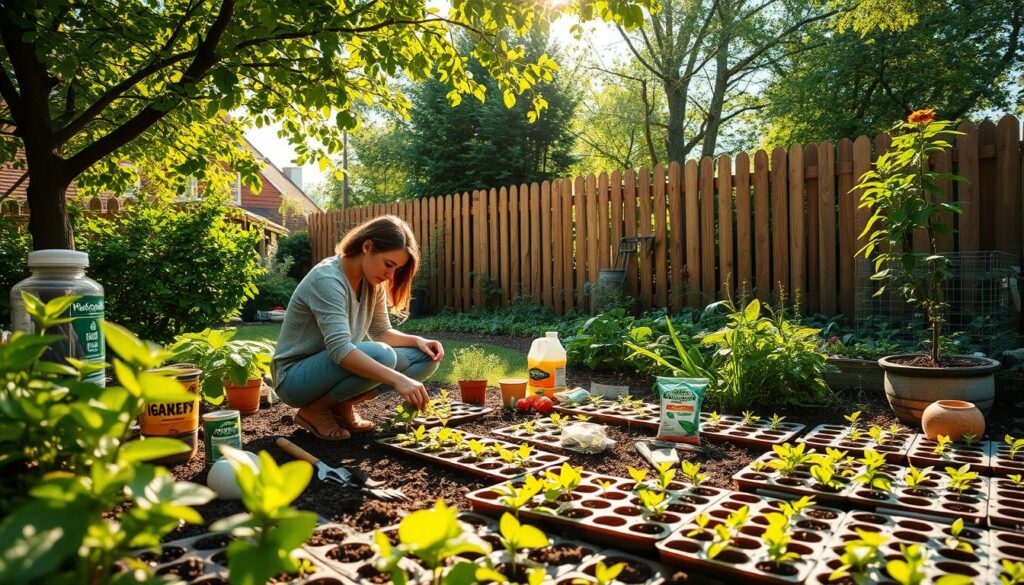
First, check what homestead skills you already have. Can you cook from scratch? Do you know how to fix things? These skills are great for your journey to self-sufficiency. Learning new skills before spending a lot of money can help avoid mistakes.
- Assess your current skills and resources
- Start small with container gardening
- Learn through free online tutorials
- Practice cooking from whole ingredients
- Explore community workshops
Budget-friendly homesteading is about learning and growing skills slowly. For example, starting with one potted vegetable can be your first step. Free learning resources like libraries, YouTube, and community workshops help you grow without spending a lot.
=> How To Transform A Typical Money-Draining House Into A Tiny Profitable Off-The-Grid Homestead (Video)
Look for ways to save money. Cooking at home, learning to preserve food, and making your own cleaning products can lower your costs. By saving money from just one meal out, you can buy pantry supplies or gardening tools.
- Minimize eating out
- Learn food preservation
- Create homemade cleaning supplies
- Buy ingredients in bulk
- Explore farmers market deals
Your journey to sustainable living starts with curiosity and dedication. Start small, keep learning, and watch your backyard turn into a productive homestead.
Essential Skills for Low-Cost Homesteading
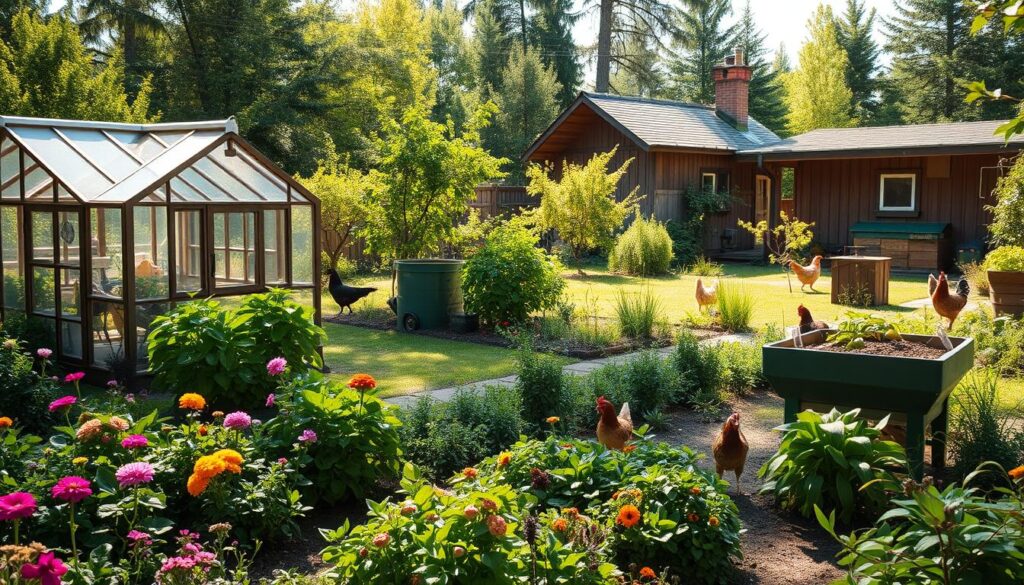
Learning homestead skills is key to living sustainably, even on a tight budget. It all starts in the kitchen. Here, you can learn skills that cut costs and boost your independence.
Every beginner should focus on these skills:
- Cooking from scratch
- Food preservation techniques
- Basic DIY and repair skills
- Container gardening
- Natural cleaning methods
Cooking meals from scratch can save a lot of money. For example, making sourdough bread only needs salt, flour, and water. This skill not only saves cash but also gives you healthier food options.
You don’t need a lot of space to start homesteading. Small gardens can grow veggies like lettuce and carrots. Starting with a $20-$50 setup is a great way to begin without spending too much.
DIY skills are not just for the kitchen. Learning to fix things, do carpentry, and maintain your home can save you a lot. Workshops and online courses make it easy to learn these important skills without spending a lot.
Living sustainably is a path you take step by step. Begin with small steps, keep learning, and see your self-sufficiency grow with each new skill.
The Self Sufficient Backyard: Layout and Design
Creating a self sufficient backyard needs careful planning. First, understand your land’s unique features. This is the key to making an efficient edible landscape. Your backyard is full of hidden possibilities, waiting for smart permaculture design.
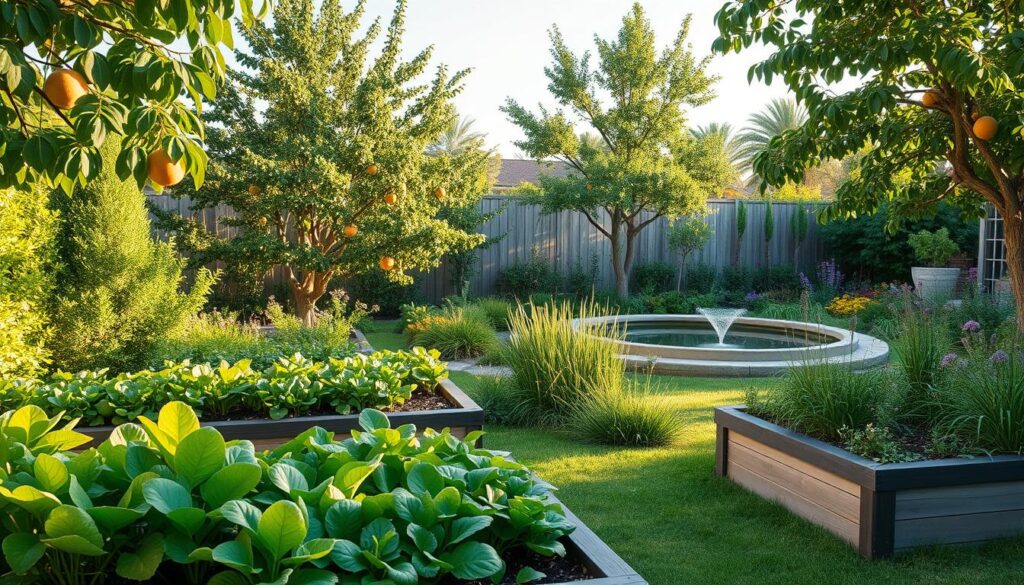
- Assess your land’s sun exposure and microclimates
- Map out water sources and drainage patterns
- Evaluate soil quality and nutrient composition
- Identify areas for different garden zones
Use vertical gardening to make the most of your space. Trellises, hanging planters, and wall gardens boost your growing area. These are great for small spaces, helping you grow more food in less room.
Related: How to Become Self-Sufficient on ¼ Acre
Permaculture design makes your backyard productive and sustainable. Aim for spaces that do more than one thing. For instance, chickens give eggs, control pests, and fertilize your garden.
- Create integrated garden zones
- Use companion planting strategies
- Implement water conservation techniques
- Design for energy efficiency
Your self sufficient backyard is more than a garden. It’s a living system that gives food, supports wildlife, and cuts down on external needs. Start small, watch closely, and grow your space into a thriving, productive landscape.
Cost-Effective Garden Planning
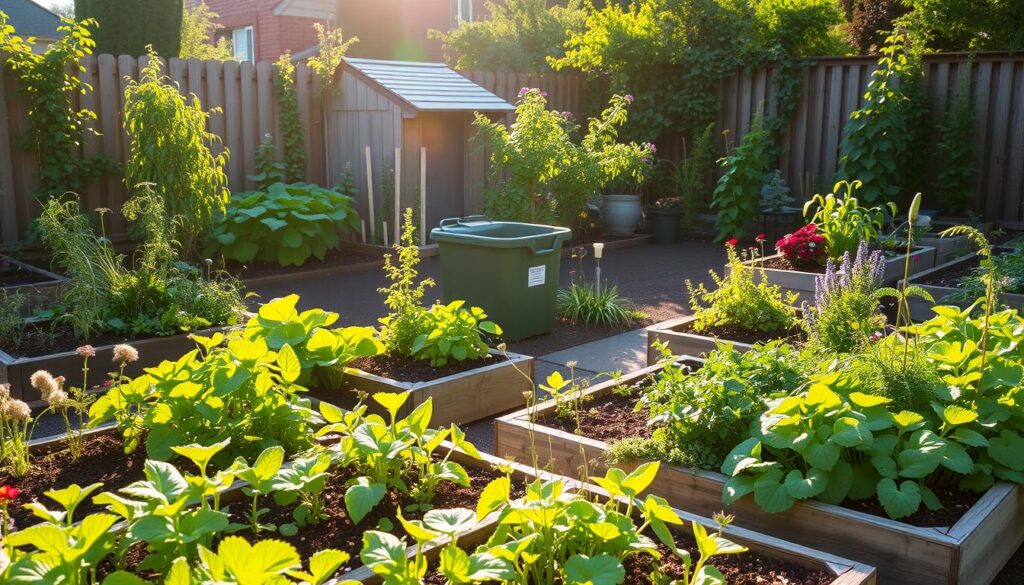
Creating a productive backyard garden doesn’t have to be expensive. With smart organic gardening, you can grow plenty of food without spending a lot. By choosing wisely, you can make the most of your garden while saving money.
When it comes to seeds, you get a lot for a little. Seed packets are cheap, costing just a few dollars for dozens of plants. Here are some ways to save:
- Choose heirloom seeds that can be saved and replanted each season
- Select perennial crops like asparagus and strawberries that return annually
- Opt for high-yield vegetables with minimal maintenance requirements
Maximizing space and resources is key in garden planning. Succession planting lets you use space well, ensuring you have food all season. By spacing crops right and rotating them, you can grow a lot in a small area.
Water conservation is also important. Using rainwater can cut down on water bills and help your garden. Simple systems can collect rain, saving you money and helping your garden grow.
Composting is another smart move for saving money. Making your own compost turns waste into valuable soil. It’s good for your wallet and your garden, making it healthier and more productive.
Smart Food Production Systems
Creating a smart food production system is key for a self-sufficient backyard homestead. By using organic gardening strategies, you can increase food output. This also cuts down costs and environmental harm.
Sustainable living means working with nature, not against it. Here are some ways to boost your backyard food:
- Implement companion planting to naturally control pests
- Use vertical gardening techniques to maximize limited space
- Develop a composting system to recycle organic waste
- Create DIY cold frames to extend growing seasons
Successful food production needs careful planning. Aim to create a system that reduces waste and boosts productivity. Even a small area can produce a lot when you use smart techniques.
Here are some methods to improve your organic gardening:
- Rotate crops to maintain soil health
- Collect rainwater for irrigation
- Use natural pest control methods
- Integrate beneficial insects into your garden ecosystem
By focusing on these smart systems, you can cut grocery bills by 30-50%. Your backyard can become a rich source of nutrition with the right planning and techniques.
Budget-Friendly Animal Husbandry
Starting an urban homestead means finding affordable ways to care for animals. Chickens are a great choice for beginners. They help make your backyard a sustainable place.
Here are some affordable animal options:
- Chickens: Produce up to 300 eggs per hen annually
- Ducks: Provide larger, nutrient-rich eggs
- Quail: Ideal for compact urban spaces
Chickens do more than just lay eggs. They help control pests and make your garden healthier. A small group of 3-4 hens can make your backyard very productive.
Here are some ways to save money on animal care:
- Build your own coop from recycled materials
- Buy feed in bulk to save money
- Use rotational grazing to keep costs down
- Get advice from local communities on animal care
Starting can cost between $200 to $500. With good planning, you can have a successful backyard animal system. It will support your green living goals without breaking the bank.
DIY Infrastructure and Tools
Creating a self-sufficient backyard doesn’t have to cost a lot. With smart planning and DIY skills, you can make essential infrastructure without spending much. Off-grid systems start with clever planning and DIY skills. These skills turn simple materials into useful solutions.
Smart homestead skills can save you money while building practical infrastructure. Here are some budget-friendly tips:
- Source reclaimed materials from local marketplaces
- Utilize community tool libraries
- Participate in skill-sharing networks
- Learn basic construction and repair techniques
When building things like chicken coops or raised garden beds, look for cheaper options. Websites like Facebook Marketplace, Craigslist, and local ads often have discounted or free materials. Using salvaged wood, metal, and other parts can cut down your costs a lot.
Sustainable living means using what you have wisely. By learning homestead skills, you can build infrastructure that supports your self-sufficiency goals without spending a lot. Joining cooperative buying groups and local workshops can help you get tools and knowledge cheaply.
Remember, 80% of personal needs can be met with creative, DIY solutions. Your backyard can become a center of sustainable living with the right planning and resourcefulness.
Food Preservation Methods
Learning to preserve food is key for homestead self-reliance. Start simple to build your sustainable living skills. Dehydrating is an easy method that doesn’t need expensive gear.
Begin your food preservation journey in your kitchen with these easy methods:
- Oven Dehydrating: Make tasty fruit leather with just your home oven
- Root Cellaring: Store veggies without using electricity
- Fermentation: Turn fresh produce into nutritious, lasting foods
- Water Bath Canning: Safely keep fruits and veggies
Fermentation is great for your homestead skills. A small sauerkraut serving has more probiotics than yogurt. Make sure veggies are fully covered in liquid to avoid spoilage and support good bacteria.
=> Discover the Lost Superfoods that could save your life during the next crisis (Video)
Canning is another top preservation method. For tomato sauce, add 2 tablespoons of lemon juice per quart to keep it safe. This way, you can enjoy your garden’s bounty all year, cutting down on waste and boosting self-sufficiency.
Preserving food takes practice. Start with one method, get better, and then try more. Your homestead will grow more sustainable with each jar you fill and meal you make from your stored food.
Money-Saving Homestead Systems
Creating sustainable living strategies can cut down your household expenses. Off-grid systems help save money and use resources wisely. By using permaculture design, you can turn your backyard into a self-sustaining space that saves you money.
- Rainwater Harvesting: Collect roof runoff to reduce water bills by up to 50%. This simple system provides free irrigation for your garden
- Composting: Divert approximately 30% of household waste from landfills while creating nutrient-rich soil amendments
- Greywater Recycling: Reuse 50-80% of household water for garden irrigation and reducing utility expenses
- Companion Planting: Minimize pest control costs by strategically placing complementary crops
Small livestock can also help your homestead’s finances. Chickens, for example, give you eggs and can even earn you money. They need very little space. Quails produce about 250 eggs a year and start laying eggs at 8 weeks old. Rabbits are another small animal that provides protein and requires little care.
Your backyard can become a key source of income with the right planning. By using these off-grid systems, you’ll make your environment more self-sufficient. This reduces your need for outside help and saves you money.
Conclusion
Creating a self sufficient backyard is more than a hobby. It’s a lifestyle change that can cut your living costs and boost your resilience. With 30% of American households growing their own food, urban homesteading is key to sustainable living. By following this guide, you can save $600 to $1,200 a year on food and learn valuable self-sufficiency skills.
Your journey to a sustainable backyard doesn’t need to be perfect. Start with small projects like raised beds, composting, or a rainwater system. These steps can cut water use by 50% and reduce kitchen waste. The goal is to see your backyard grow with your knowledge and skills.
Sustainable living is more than saving money. It’s about living a more connected, resilient life. By embracing urban homesteading, you improve your family’s finances and help the environment. Small actions, like growing veggies or using renewable energy, can have big effects.
The path to a self sufficient backyard is unique for everyone. Stay curious, join local gardening groups, and keep learning. Your dedication to sustainable living begins in your backyard, one seed at a time.

